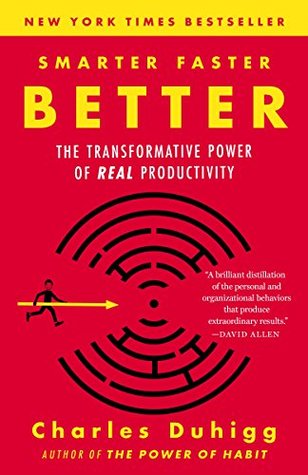More on this book
Community
Kindle Notes & Highlights
Read between
February 18 - April 14, 2020
“Our brains crave reducing things to two or three options,” said Eric Johnson, a cognitive psychologist at Columbia University who studies decision making. “So when we’re faced with a lot of information, we start automatically arranging it into mental folders and subfolders and sub-subfolders.”
It wasn’t just that Fludd was isolating variables. Rather, by coming up with hypotheses and testing them, Fludd’s team was heightening their sensitivity to the information flowing past. In a sense, they were adding an element of disfluency to their work, performing operations on the “data” generated during each conversation until lessons were easier to absorb.
When we encounter new information and want to learn from it, we should force ourselves to do something with the data. It’s not enough for your bathroom scale to send daily updates to an app on your phone. If you want to lose weight, force yourself to plot those measurements on graph paper and you’ll be more likely to choose a salad over a hamburger at lunch. If you read a book filled with new ideas, force yourself to put it down and explain the concepts to someone sitting next to you and you’ll be more likely to apply them in your life. When you find a new piece of information, force yourself
...more
We live in a time when data is more plentiful, cheaper to analyze, and easier to translate into action than ever before. Smartphones, websites, digital databases, and apps put information at our fingertips. But it only becomes useful if we know how to make sense of it.
Motivation becomes easier when we transform a chore into a choice. Doing so gives us a sense of control.
“Most recruits don’t know how to force themselves to start something hard. But if we can train them to take the first step by doing something that makes them feel in charge, it’s easier to keep going.”
TO GENERATE MOTIVATION • Make a choice that puts you in control. If you’re replying to emails, write an initial sentence that expresses an opinion or decision. If you need to have a hard conversation, decide where it will occur ahead of time. The specific choice itself matters less in sparking motivation than the assertion of control. • Figure out how this task is connected to something you care about. Explain to yourself why this chore will help you get closer to a meaningful goal. Explain why this matters—and then, you’ll find it easier to start.
TO SET GOALS: • Choose a stretch goal: an ambition that reflects your biggest aspirations. • Then, break that into subgoals and develop SMART objectives.
TO STAY FOCUSED: • Envision what will happen. What will occur first? What are potential obstacles? How will you preempt them? Telling yourself a story about what you expect to occur makes it easier to decide where your focus should go when your plan encounters real life.
TO MAKE BETTER DECISIONS: • Envision multiple futures. By pushing yourself to imagine various possibilities—some of which might be contradictory—you’re better equipped to make wise choices. • We can hone our Bayesian instincts by seeking out different experiences, perspectives, and other people’s ideas. By finding information and then letting ourselves sit with it, options become clearer.
TO MAKE TEAMS MORE EFFECTIVE: • Manage the how, not the who of teams. Psychological safety emerges when everyone feels like they can speak in roughly equal measure and when teammates show they are sensitive to how each other feel. • If you are leading a team, think about the message your choices reveal. Are you encouraging equality in speaking, or rewarding the loudest people? Are you showing you are listening by repeating what people say and replying to questions and thoughts? Are you demonstrating sensitivity by reacting when someone seems upset or flustered? Are you showcasing that
...more
TO MANAGE OTHERS PRODUCTIVELY: • Lean and agile management techniques tell us employees work smarter and better when they believe they have more decisionmaking authority and when they believe their colleagues are committed to their success. • By pushing decision making to whoever is closest to a problem, managers take advantage of everyone’s expertise and unlock innovation. • A sense of control can fuel motivation, but for that drive to produce insights and solutions, people need to know their suggestions won’t be ignored and that their mistakes won’t be held against them.
TO ENCOURAGE INNOVATION: • Creativity often emerges by combining old ideas in new ways—and “innovation brokers” are key. To become a broker yourself and encourage brokerage within your organization: • Be sensitive to your own experiences. Paying attention to how things make you think and feel is how we distinguish clichés from real insights. Study your own emotional reactions. • Recognize that the stress that emerges amid the creative process isn’t a sign everything is falling apart. Rather, creative desperation is often critical: Anxiety can be what often pushes us to see old ideas in new
...more
TO ABSORB DATA BETTER: • When we encounter new information, we should force ourselves to do something with it. Write yourself a note explaining what you just learned, or figure out a small way to test an idea, or graph a series of data points onto a piece of paper, or force yourself to explain an idea to a friend. Every choice we make in life is an experiment—the trick is getting ou...
This highlight has been truncated due to consecutive passage length restrictions.


